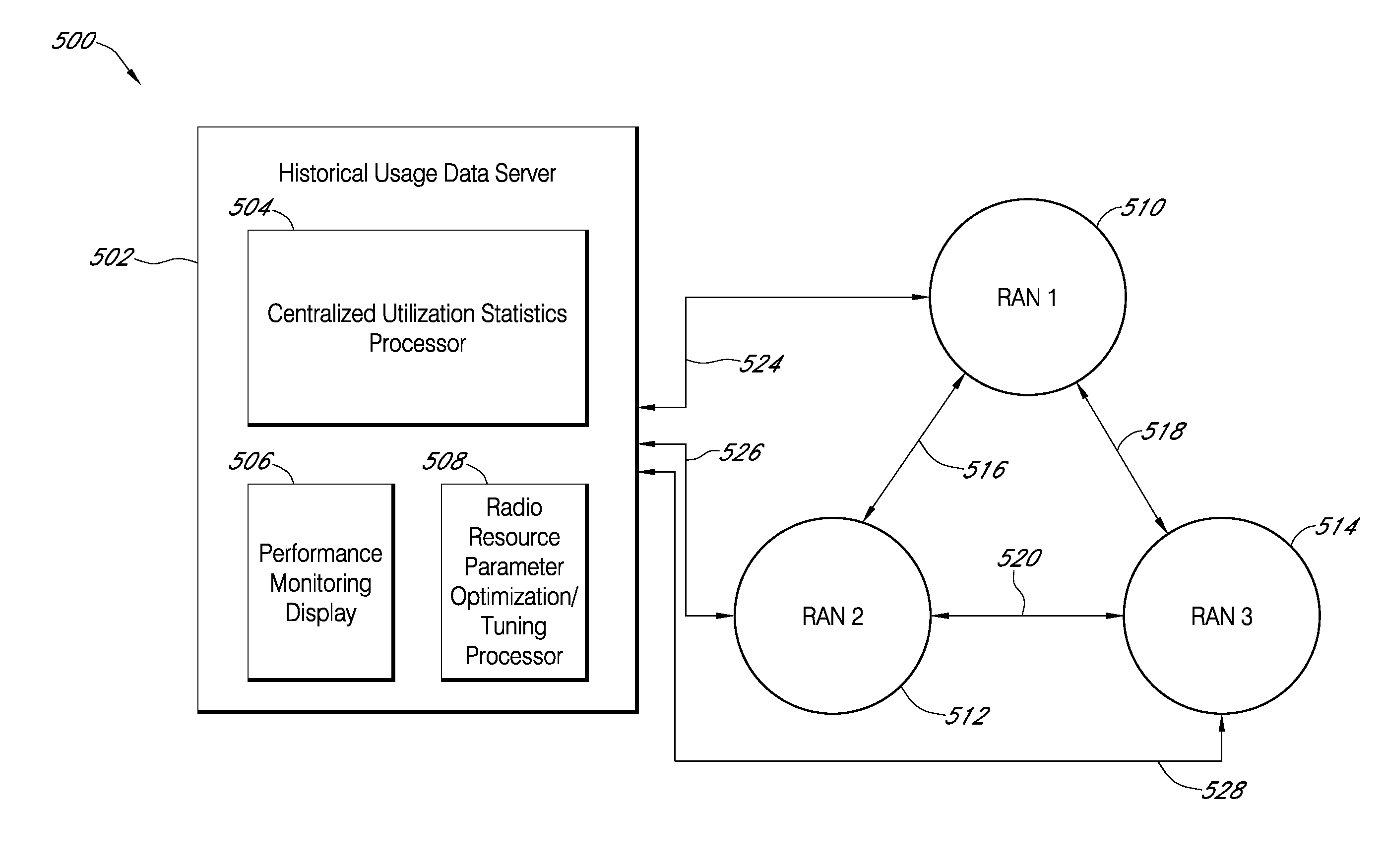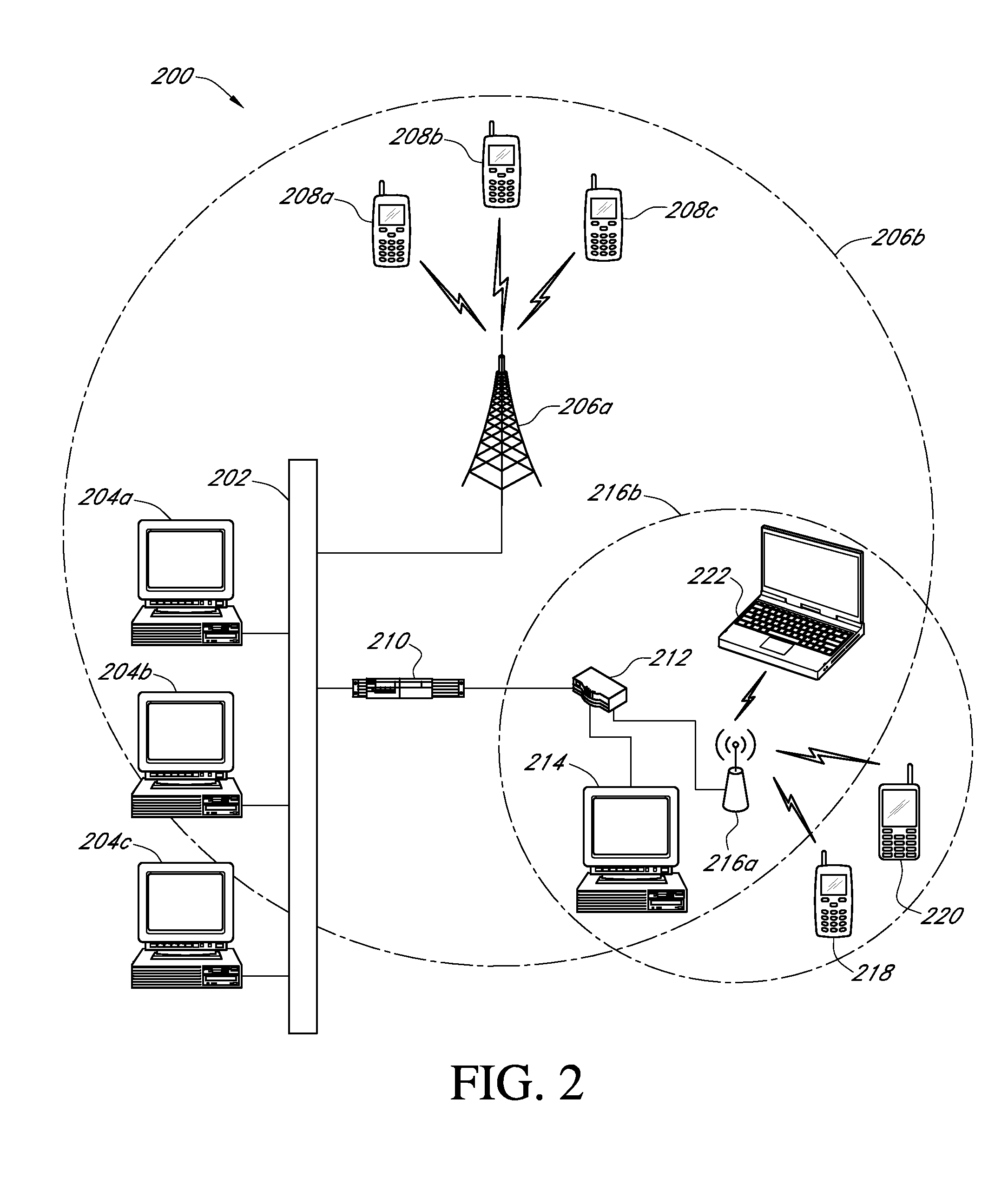Systems and methods for usage-based radio resource management of self-optimizing cells
a radio resource and self-optimization technology, applied in the field of self-optimization radio resources, can solve the problems of data loss, affecting the service life of the radio resource,
- Summary
- Abstract
- Description
- Claims
- Application Information
AI Technical Summary
Benefits of technology
Problems solved by technology
Method used
Image
Examples
Embodiment Construction
[0038]In accordance with an exemplary embodiment of the present invention, FIG. 1 illustrates a generic cell topology 100 depicting cell coverage regions resulting from extemporaneous deployment methodology. The generic cell topology 100 may include, but is not limited to, one or more macrocell base stations 102a with a corresponding coverage area 102b, and one or more intermediate-coverage base stations 104a such as a microcell or picocell base station with a corresponding coverage area 104b. Generic cell topology 100 further includes several femtocell base stations 106a and 108a each with a corresponding coverage area 106b and 108b. Cell coverage areas 102b, 104b, 106b, and 108b overlap in varying degrees according to their placement in the generic cell topology 100. This tightly knit cell topology necessitates a frequency allocation plan which is addressed by the present invention.
[0039]In accordance with various embodiments of the present invention, a wide-area or wide-range bas...
PUM
 Login to View More
Login to View More Abstract
Description
Claims
Application Information
 Login to View More
Login to View More - R&D
- Intellectual Property
- Life Sciences
- Materials
- Tech Scout
- Unparalleled Data Quality
- Higher Quality Content
- 60% Fewer Hallucinations
Browse by: Latest US Patents, China's latest patents, Technical Efficacy Thesaurus, Application Domain, Technology Topic, Popular Technical Reports.
© 2025 PatSnap. All rights reserved.Legal|Privacy policy|Modern Slavery Act Transparency Statement|Sitemap|About US| Contact US: help@patsnap.com



